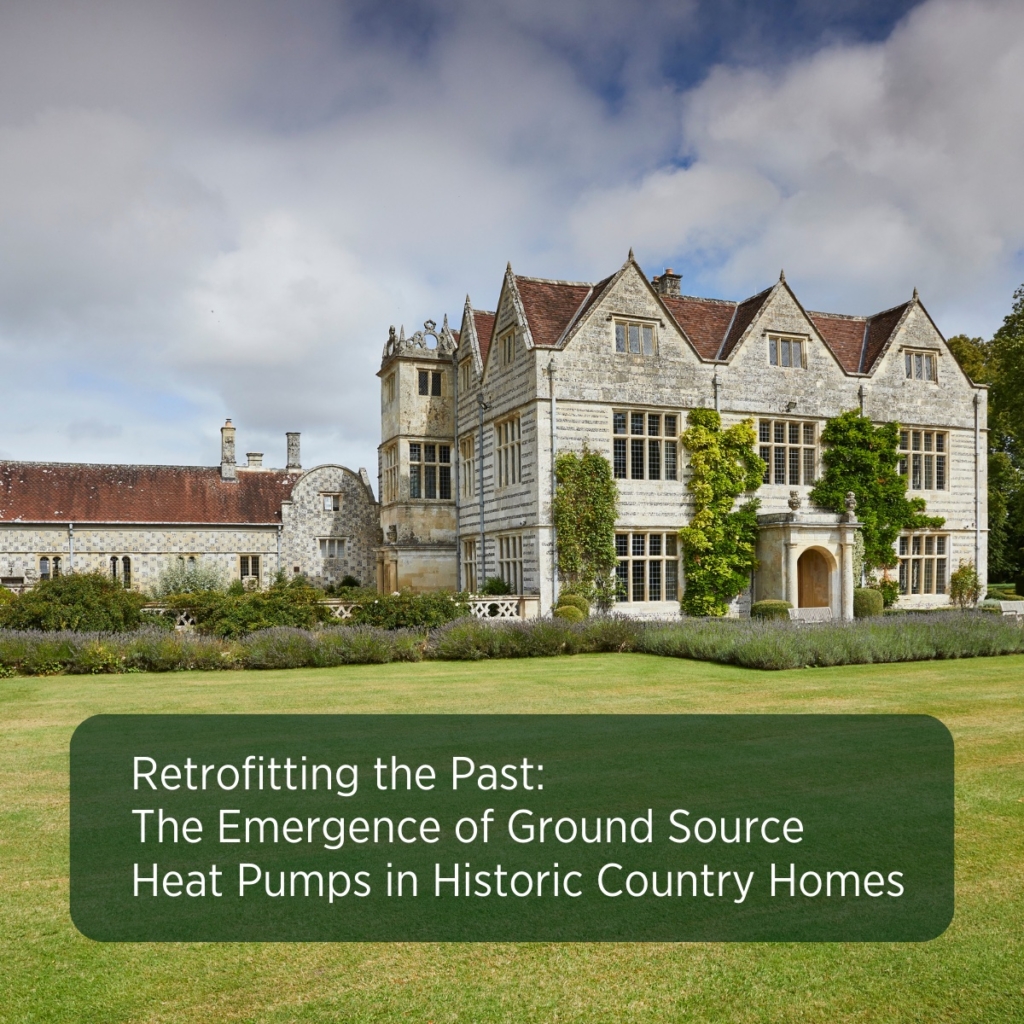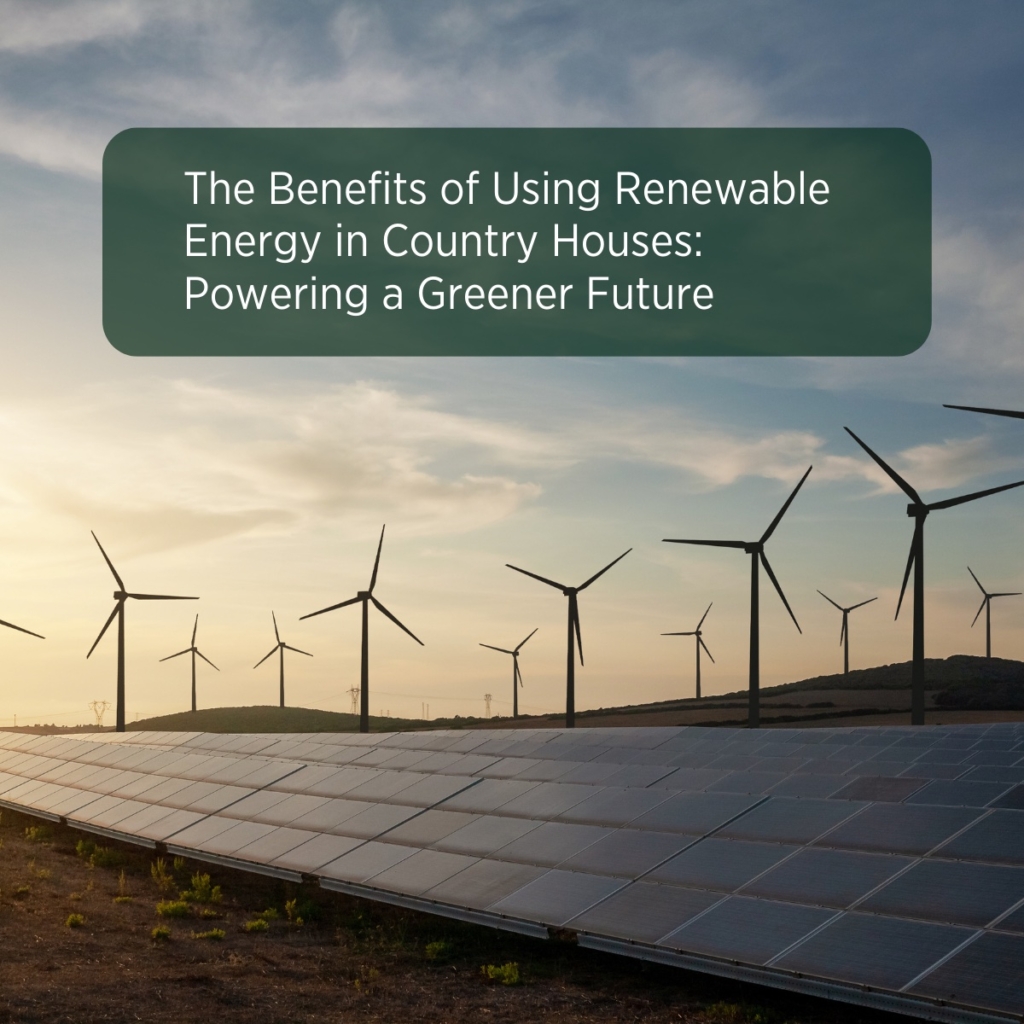Just days before London’s Innovation Zero Congress, Country House building specialists R. Moulding & Co gathered leading renewable energy experts and an audience of over 70 Country House owners, in Stockton House, Wiltshire, to discuss practical solutions for adopting a renewable energy strategy in Country Houses.
The seminar was a rich confluence of ideas, featuring some of the industry’s leading experts, each providing distinctive yet complementary insights into the evolving landscape of green energy solutions.

First to speak was Bean Beanland, a founding member of the Heat Pump Federation (HPF). He has over 14-years’ experience in energy and carbon mitigation and in conceptual technology selection, procurement and the installation of mechanical services and renewable technologies. Bean discussed Government legislation and future predictions of likely changes, in which he emphasised that there is no long-term prosperity without action on climate change; and there is no energy security without investing in renewables as climate and energy security go hand-in-hand. The government’s focus on electrification and ambition to have fully decarbonised electricity by 2035, indicates a significant move toward greener energy solutions.
Bean also provided some fascinating statistics on a macro scale of the government initiatives that are driving change, and looked at the implications of each of these. This included – the projected five-fold increase in solar by 2035, providing up to 70GW of power; the need for unprecedented grid expansion with upgrades accelerated by three years; and that onshore wind is an efficient, cheap and widely supported technology with more flexibility in planning than people realise.
For a more detailed look into what Bean was talking about, please see here.
Second came Ed Levien, Commercial Director at isoenergy, who specialise in designing, supplying, and installing renewable energy systems, including ground source heat pumps, air source heat pumps, and other sustainable energy solutions. Having completed over 1,000 installations across the UK, they are at the forefront of working with ecclesiastical buildings, listed buildings, large country properties, and schools.
Ed presented to the audience the current options for country house owners, including Ground Source (GSHP) and Air Source Heat Pumps (ASHP), Hydro, Solar, Biomass, Oil, Electricity and Gas. He gave direct comparisons of running costs, co2 impact for each, and gave an overview of technology application and operation in the context of large residential properties. Key points he mentioned were that legislation is changing in the UK with fossil fuels being phased out with legislative changes that are coming as of 2026. This impacts anyone using oil, LPG, direct electric and gas. Ed’s perspective was that the future is electric through renewable electricity (solar & wind) to power electrified heat pumps.
Ed told the audience of the typical considerations when looking at a renewable energy strategy for large residential buildings. This included that the running costs need to factor in the installation and maintenance of any system; deciding if there are any Government incentives; distribution of heat and energy is critical to the performance and ongoing running costs; and finally that the cheapest unit of heat is the one you don’t have to buy! Therefore, insulation of roof, walls floors and windows are critical, but of course can be difficult in period properties due to the building design and regulation.
Ed’s concluded that energy bills in large historic buildings are a significant long-term expense – but if carefully designed, then you can expect a renewable energy system to reduce these by 15-75%. If you can future-proof your energy supply, as well as saving money, you can reduce the building’s carbon emissions by 60%+.
For a more detailed look into Ed’s commentary, please see here.
Then came Nick Jenkins, owner of Stockton House where the seminar was generously hosted. Nick shared his insights when deciding on the best energy system to future-proof Stockton House, and his switch from gas to a hybrid of Ground Source and Air Source heat pumps. Fascinatingly, by installing the heat pumps next to the house (and thereby reducing the circuit size by 150m), and setting the house temperature to 19 degrees constantly, rather than varying the temperature at day and night, the overall efficiency was improved, realising a 30% saving on his annual energy bill. In Nick’s calculations, he had incorporated all costs, including the ongoing running cost and energy price fluctuations, combined with the installation and maintenance costs. This he referred to as ‘the fully loaded’ cost and said the industry should adopt this approach with clients when looking to compare overall cost. “The fully loaded cost comparison has a role of reassuring the client that the choice to install a significantly more capital-intensive system is justifiable in the long term. I don’t think anyone would make the choice on the basis of cost savings alone. There has to be a motivation to be ahead of the race to zero carbon. The fully loaded cost comparison gives the client a tool to justify a decision they would like to take.”
Nick also pointed out that when considering what solutions might be most viable, one should look at the resources available on the estate as a determining factor. For example, if you have large woodland, then you can potentially use this as a fuel source, or a river or lake, then that opens up the options available.
Nick concluded: “We seem to be in an awkward haitus between the end of the carrot era and before the introduction of the stick. The only reason for installing a carbon free heating system now would be at the point the existing system is about to be replaced and a major refurbishment is happening. The cost of replacing the heating system with GSHP system is expensive but it a small part of the total cost of refurbishment and there is considerable incentive to get any intrusive work done while the place is a building site. It would be possible to install a gas boiler now and run it for 20 years. Provided that the emitter circuit has been sized for 55°C then the gas boiler could be swapped out for a heat pump when it is absolutely imperative without having to change anything in the house itself. If budget is a constraint then this might make sense though it would make sense to make provision for the future GSHP installation by ensuring that there is sufficient space for buffer tanks etc otherwise the retrofitting costs could be extensive.”
Simon Fowler, director at Fowler Fortescue rural asset management specialists, followed Nick. Simon spoke about his experiences with biomass at Fonthill Estate in Wiltshire. Fonthill use biomass to provide energy for over 200 houses and 50 offices. The estate has its own fuel source from its forests, so can therefore utilise wood chip, making biomass a viable option. He asserted that there are various tax incentives available when you have your own fuel source, plus the installation benefited from an EIS installation rebate of 30%. Simon calculated that costs work out at 25% cost for boiler and then 75% of the costs for distribution of heating which includes labour for forestry. Simon commented that the size and scale of operations, as well as a readily available fuel source was a determining factor in choosing biomass. Ideally if your needs are 1MW+ then that is a realistic scale for biomass. At 200KW – 500KW then biomass is still viable, but other options should be considered.
Gary Wilburn, Managing Director at EP Projects champions the use of a hybrid approach to energy solutions in large scale properties. Gary has over 35 years’ experience in adopting a fabric first, building physics approach, to deliver integrated sustainable and renewable energy solutions for the residential, mixed use and commercial sectors. Gary’s gave extensive tips to the audience when dealing challenges such as planning considerations, and that build relationships with the relevant authorities are key. He also mentioned future technologies such as distributed energy storage using batteries and the big push in national infrastructure with the national grid not being fit for purpose in supporting future energy demand through electrification.
The audience Q&A session lasted an hour, with each of the panel giving their insights and experiences to a multitude of questions from the audience. Given the vast subject and such a positive reception from the audience, Moulding is aiming to host another seminar in the near future. If you would be interested in an invite to a future seminar, then please do let us know. [email protected]
Moulding has developed relationships with specialist consultants and contractors alike to ensure that our projects benefit from a well-considered strategy and installation. The use of an alternative energy sources is becoming prevalent in many of our projects with the common aim of reducing the demand and cost of fossil fuels. Heat pumps, ground loops, bore holes, solar and PV cells are becoming familiar additions to the service installations of a new or refurbished property. So too are the use of grey water recycling and green roof coverings.
If you are considering your next steps for renewable energy solutions and would like to discuss the options for your Country House, please contact us and we can introduce you to a relevant expert. [email protected]



 One of two builders listed in the Country Life Top 100 for the 9th consecutive year.
One of two builders listed in the Country Life Top 100 for the 9th consecutive year.